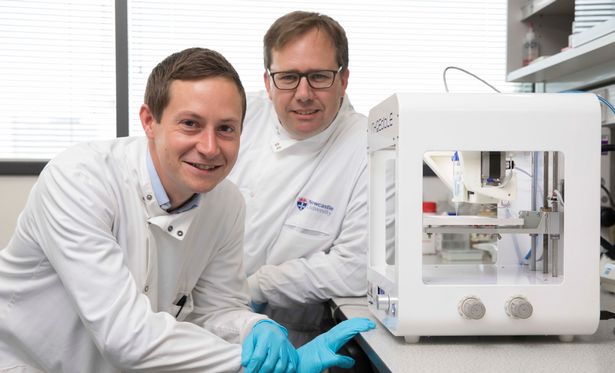Scientists at Newcastle University (NCL) have successfully 3D printed human corneas for the first time. Gelatinous and multicellular, the artificial corneas are valuable steps towards much needed solutions for the millions of people suffering from eye disease and severe damage around the world.
A vivid solution
The cornea is a vital part of human vision; it acts as the transparent outer layer of the eyeball, refracting and bending light in order to focus eyesight. With over 10 million people requiring corneal transplants worldwide, scientists, including those from the Instituto de Investigación de Biomédica del Hospital La Paz (IdiPAZ) have been exploring methods to end the shortage of global cornea donations through 3D bioprinting.
Progress has been made in aiding human eyesight through 3D printing as seen by University of Canterbury student Logan Williams’ Polar Optics 3D printed contact lenses. However, many are still suffering from blindness caused by corneal diseases.
To remedy the shortage of corneas available Che Connon, Professor of Tissue Engineering at Newcastle University, and his research team created a printable bioink solution from donor stem cells, alginate, and collagen.
Ten-minute corneas
The specially developed bioink has been successfully 3D printed in under ten minutes in concentric circles to mimic the shape of a human cornea.
“Many teams across the world have been chasing the ideal bio-ink to make this process feasible,” comments Professor Connon, “Our unique gel keeps the stem cells alive whilst producing a material which is stiff enough to hold its shape but soft enough to be squeezed out the nozzle of a 3D printer.”
The researchers previously used a similar hydrogel in an experiment to keep cells alive at room temperature for several weeks. From this test, they were able to identify a process that allowed cells to grow within a bioink solution.

Guest researcher Abigail Isaacson, was one of the scientists that confirmed that a cornea could be built and rapidly produced to match a patient’s specifications by scanning the dimensions of tissue from an actual eye.
Professor Connon added,“What we have shown is that it is feasible to print corneas using coordinates taken from a patient eye and that this approach has potential to combat the worldwide shortage.”
The 3D printed corneas are now undergoing further testing as scientists estimate that it will be several years until they are suitable for transplantation.
Stay up to date with all the latest 3D bioprinting developments at 3D Printing Industry on Twitter and Facebook. Subscribe to our regular newsletter here.
Looking for a change of scenery? Register for upcoming 3D printing job updates here.
Featured image shows Dr. Stephen Swioklo, holding 3D printed cornea with Professor Che Connon (right). Photo via Newcastle University.


